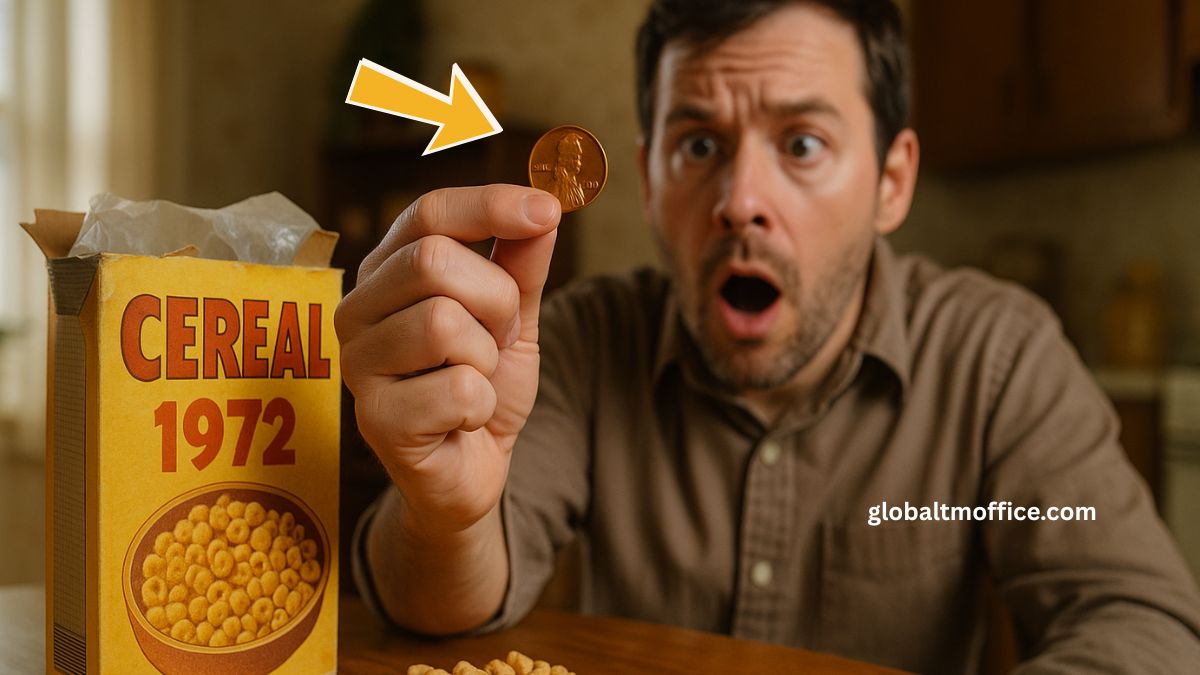In an astonishing turn of events, a man recently opened a sealed 1972 cereal box from his attic and discovered a rare 1943 bronze Lincoln penny hidden inside.
This incredible find—valued at a whopping $90,000—has captivated collectors and the public alike, reigniting curiosity around old coins and the everyday places they might be hiding.
This wasn’t a staged giveaway or planned prize; it was a genuine collector’s dream come true. Whether the coin was accidentally inserted during packaging or slipped in by a previous owner remains a mystery.
What’s certain is that the discovery has sparked new interest in vintage cereal memorabilia and coin collecting.
The 1943 Bronze Lincoln Penny: A Numismatic Rarity
In 1943, the U.S. Mint transitioned from using copper to zinc-coated steel for pennies to preserve copper for wartime production.
However, a small number of bronze planchets were mistakenly struck with the 1943 dies, resulting in one of the most valuable error coins in American history—the 1943 bronze Lincoln penny.
Only 10 to 15 authentic examples of these coins are believed to exist today, making them extremely desirable for collectors. The one found inside the cereal box is not only rare but also preserved in remarkably good condition, further increasing its value and historical significance.
Key Details of the Discovery
| Aspect | Details |
|---|---|
| Coin Discovered | 1943 Bronze Lincoln Penny |
| Location Found | Inside a sealed 1972 cereal box |
| Estimated Value | $90,000 |
| Rarity | Approximately 10–15 known examples |
| Historical Significance | Minting error during WWII copper conservation |
Authenticating the Find
To verify its authenticity, experts used a series of well-established coin identification methods:
- Weight Test: The coin weighed approximately 3.11 grams, which aligns with standard bronze composition used before 1943.
- Magnet Test: Since bronze is non-magnetic and steel is magnetic, the coin’s non-reactive behavior to magnets confirmed it wasn’t steel.
- Visual Inspection: The 1943 Bronze Lincoln Penny exhibited the correct reddish-brown tone, fine detailing, and year imprint unique to known 1943 bronze specimens.
Following these checks, the coin was certified and valued, confirming its status as a legitimate and highly valuable collectible.
What This Means for Collectors
This find underscores a critical lesson for collectors and enthusiasts—check your old possessions. Whether it’s cereal boxes, coin jars, old books, or antique furniture, there’s always a chance that forgotten treasures could be hiding in plain sight.
In recent years, accidental finds like this have grown in number, driven by people exploring inherited items or unpacking long-stored belongings.
It’s also a wake-up call to examine even the smallest and most common items—that “junk drawer” penny could be worth a fortune.
The discovery of a $90,000 penny inside a cereal box is a thrilling reminder that valuable artifacts don’t always come from auctions or bank vaults—they may be hiding in your pantry.
This unique story blends numismatic history with modern curiosity, encouraging everyone to take a closer look at what’s lying around at home. With a bit of luck and a keen eye, the next life-changing discovery could be yours.
FAQs
How did a 1943 bronze lincoln penny end up in a 1972 cereal box?
While the exact origin is unknown, it may have been included intentionally or ended up inside during handling or storage.
What other rare coins should I look for?
Watch out for 1943-S bronze pennies, 1955 doubled-die cents, and coins with minting errors—they can all be worth thousands.
How can I get my coin valued?
Bring it to a reputable coin dealer or submit it to a certified grading service to evaluate its condition and authenticity.

